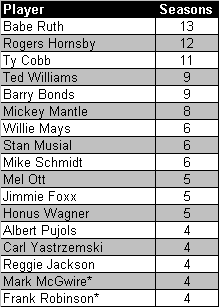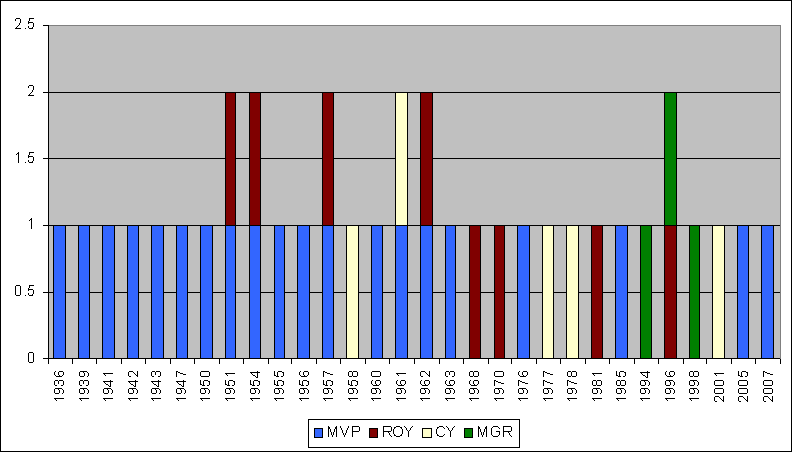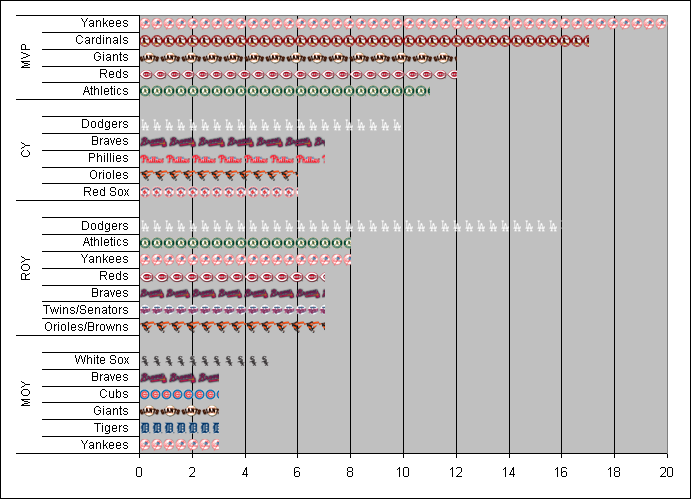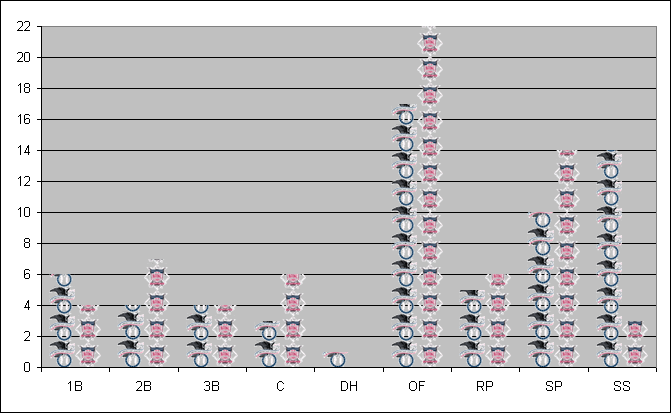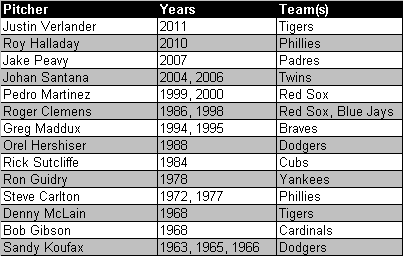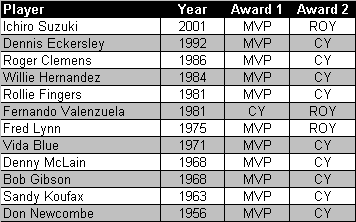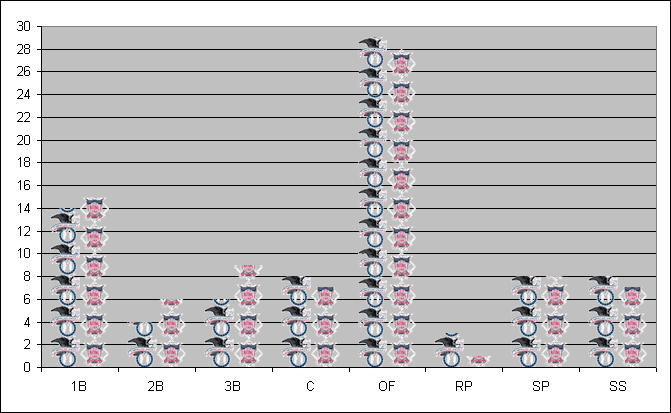 On Monday, the Hall of Fame could grow by as many as four. That’s the maximum number of candidates who could be elected by the Golden Era Committee. After giving careful consideration to the ballot, I’ve decided to pass on former players Ken Boyer, Tony Oliva, ex-Yankees Allie Reynolds, Luis Tiant, and Jim Kaat (a particularly tough choice), and longtime executive Buzzie Bavasi.
On Monday, the Hall of Fame could grow by as many as four. That’s the maximum number of candidates who could be elected by the Golden Era Committee. After giving careful consideration to the ballot, I’ve decided to pass on former players Ken Boyer, Tony Oliva, ex-Yankees Allie Reynolds, Luis Tiant, and Jim Kaat (a particularly tough choice), and longtime executive Buzzie Bavasi.
That leaves exactly four men who are deserving of making the grade in Cooperstown.
Ron Santo:
Of the ten men being considered by the Golden Era committee, there is no stronger candidate for election than the late Ron Santo. Arguably one of the five greatest third basemen of all time, and conservatively one of the ten greatest to play the position, Santo has long deserved enshrinement in Cooperstown.
Let’s consider just a few of Santo’s accomplishments. A patient hitter with a keen eye at the plate throughout his career, Santo compiled a lifetime .366 on-base percentage. With 342 home runs, he managed a .464 slugging percentage, despite playing a good portion of his career during an era in which pitchers held major advantages over hitters. Santo’s defensive accomplishments were only slightly less impressive. A five-time Gold Glove winner, the defensively superior Santo led the National League in total chances nine times and led the league in assists seven times. Those numbers indicate that Santo had good range, in addition to the soft hands and ability to start double plays that characterized his long tenure with the Cubs.
With 66 WAR, Santo compares favorably to Brooks (69) and comes within striking distance of George Brett (85) and former Yankee Wade Boggs (89), two offensive-minded third basemen.
Gil Hodges:
Based solely on his accomplishments as a player, or only on his managerial tenure, Hodges likely does not have the requisite resume for the Hall of Fame. But that’s not how the Hall of Fame election process is supposed to work. According to the rules for election, voters are encouraged to consider a candidate’s entire career in assessing his worth for the Hall of Fame.
As a player, Hodges was a fine all-round performer who hit with power, drew walks, and played a Gold Glove-caliber first base, as he contributed prominently to five National League championships for Brooklyn. During his peak, he slugged .500 or better over a span of eight consecutive seasons. As a manager, Hodges oversaw one of the great franchise turnarounds in major league history. He took command of a perennially poor Mets team that had won 57 games, immediately elevated them to a 73-win level, and then engineered one of the most memorable upsets in World Series history. Hodges also maintained the Mets at a level of better than .500 in 1970 and 1971, despite the team’s glaring lack of offense at a number of positions.
In looking at Hodges properly as a combination candidate, the argument for his Hall of Fame election becomes much clearer.
Minnie Minoso:
Like Hodges, Minoso requires more than a surface look to understand his worthiness for the Hall of Fame. He did not become a fulltime major leaguer until the age of 25, through no fault of his own, but because of the Jim Crow segregation that kept black players in the Negro Leagues or the Caribbean.
Over four Negro Leagues seasons, Minoso earned two All-Star game berths and led his teams to two appearances in the Colored World Series. If the game had already been integrated, Minoso might have spent those four seasons playing in the major leagues during his age 20 to 23 seasons.
Even without major league credit for his Negro Leagues years, Minoso’s numbers are impressive. A player in the mold of Enos Slaughter and Pete Rose, Minoso compiled a lifetime on-base percentage of .389 while providing value as both a left fielder and third baseman. Minoso led the league in hits and total bases one time each, in stolen bases and triples three times apiece, and in hit-by-pitches ten times. One of the game’s premier tablesetters, Minoso scored 100-plus runs five times, while topping 90 runs on five other occasions.
Charlie Finley:
Charlie O’s bitter and tempestuous personality will keep him out of the Hall, but an objective look at his accomplishments reveals a deserving Cooperstown candidate. Under the leadership of Finley, the A’s accomplished more during the 1970s than any other major league team, winning three world championships and five division titles. As the team’s owner beginning in 1962, Charlie Finley realized that he was a relative novice at baseball. He listened intently to his scouts—people like Joe Bowman, Dan Carnevale, Tom Giordano, Clyde Kluttz, and Don Pries—who told him which amateur players to pursue as free agents and which ones to draft. As a result, the A’s developed future standouts like Sal Bando, Vida Blue, Bert Campaneris, Rollie Fingers, Catfish Hunter, Reggie Jackson, Blue Moon Odom, and Gene Tenace.
In later years, a more confident and penurious Finley pushed out many of his veteran scouts and tended to ignore the advice of those he still employed. Yet, he still managed to exhibit a deft hand in making trades and signing bargain basement role players. In 1971, Finley made perhaps his best trade, sending an underachieving Rick Monday to the Cubs for Ken Holtzman, who would win 77 games over four seasons in Oakland. Finley also engineered the five-player deal that brought a young left-handed power hitter (Mike Epstein) and an important left-handed reliever (Darold Knowles) to the Bay Area. In 1973, the A’s might not have won the World Series without Knowles, who pitched in all seven games against the Mets.
After the 1972 season, Finley acquired a much-needed center fielder in Billy North for aging middle reliever Bob Locker. In his first four years with the A’s, North played a solid center field, stole 212 bases, and become both a capable leadoff man and No. 2 hitter. Finley also swung unheralded deals for key role players like Matty Alou, Deron Johnson, and Horacio Pina, who would fill important holes in the outfield, at designated hitter, and in middle relief, respectively, during the 1972 and ’73 seasons.
Then there is Finley’s impact as an innovator. He championed the cause for night World Series games, the use of the designated hitter, and interleague play, all before they were officially adopted. He also dressed the A’s in colorful green and gold uniforms, giving the team a unique brand and setting a trend for the game’s changing on-field appearance in the 1970s.
Bruce Markusen writes “Cooperstown Confidential” for The Hardball Times.





